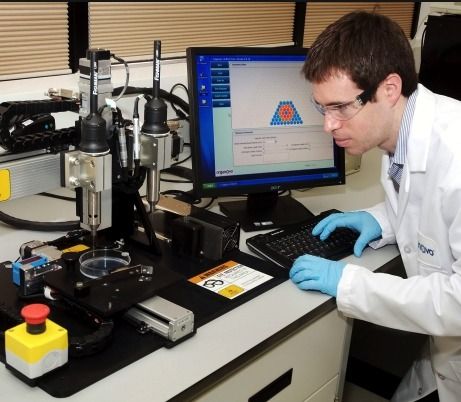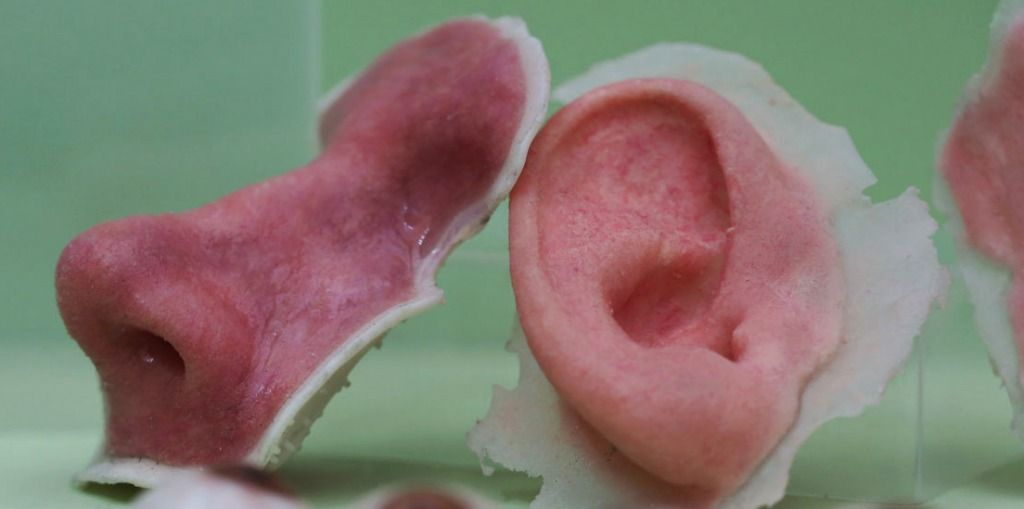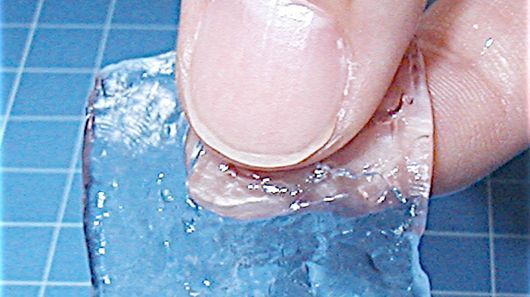Researchers discover changes in the activity of sodium and potassium channels during the day and night impact the sleep-wake cycle.
Scientists at the University of Vienna and the Austrian Academy of Sciences have developed a new quantum computing technique in which operations occur without a well-defined order. The new technique accomplished a task more efficiently than a standard quantum computer, and could open the way to faster quantum computing.
Biohackers are installing USB drives in their fingertips and growing third ears on their arms. Welcome to the world of DIY cyborgs.
Undoubtedly one of the most exciting areas within the 3D printing space is that of bioprinting. Using layer-by-layer fabrication methods, a number of companies are in the process of pushing forward a new paradigm shift within the medical implant, transplantation, and surgical spaces. While the media has mainly focused on Organovo, the company behind the world’s first 3D printable liver tissue, there are actually several other companies involved in this incredible space. Here are 3DPrint.com we thought it would be helpful to underline just a handful of those companies that may be about to change medicine as we know it.
Organovo The company, headquartered in San Diego, California, has been at the forefront of 3D bioprinting research for some time now. Not only are they currently bringing revenues in by providing pharmaceutical companies with their  exVive3D™ Liver Tissue for drug toxicity testing, but they have partnered with major companies in the health space including L’Oréal and Merck, and are planning on introducing their exVive3D™ Kidney Tissue product by next year. With an ultimate goal of 3D printing patches made of human tissue for failing organs, and eventually entire organs for transplantation, Organovo certainly has their work cut out for them.
exVive3D™ Liver Tissue for drug toxicity testing, but they have partnered with major companies in the health space including L’Oréal and Merck, and are planning on introducing their exVive3D™ Kidney Tissue product by next year. With an ultimate goal of 3D printing patches made of human tissue for failing organs, and eventually entire organs for transplantation, Organovo certainly has their work cut out for them.
While smaller organisms such as nematode worms have been imaged before, a entire central nervous system has now been recorded for the first time in the fruit fly, drosophila melanogaster.
The video shows neural activity (yellow/red) throughout the entire central nervous system (grey) of a Drosophila larva.
Credit: Keller et al. Nature Communications See More.
The Void is an ambitious project that seeks to combine virtual reality headsets with custom-built physical playgrounds.
A Utah man is developing a virtual-reality experience unlike anything the world has seen before.
Scientists have developed a new hydrogel that stretches and contracts just like an artificial muscle. The team created an L-shaped object made out of the hydrogel and immersed it in a water bath. When the water’s temperature was varied, it slowly “walked” forward.
The researchers at the Riken Center for Emergent Matter Science in Japan got the hydrogel to move by tweaking its properties. Polymers like hydrogels carry large amounts of water within their structure which gives them the capacity to respond to variations in environmental factors such as acidity, voltage and temperature. Typically, this response time is quite slow, as the hydrogel must excrete or absorb water to correspondingly shrink or expand.
The Japanese scientists altered the new hydrogel to enable it to contract only in one dimension while expanding in another. Since the hydrogel doesn’t contract equally in every direction, it’s able to alter its shape without absorbing or excreting any water. To test the hydrogel’s properties, the team created an L-shaped polymer and changed the temperature repeatedly to observe its response.
A new optical chip that can process photons in a dizzying number of infinite ways has been developed by two research teams. Researchers from the University of Bristol in the UK and Nippon Telegraph and Telephone in Japan (NTT) are behind the breakthrough in quantum computing. The means to solve daunting problems such as the ability to design new life-saving drugs; perform advanced calculations that are a step or two beyond even supercomputers; and analyze weather patterns for more accurate forecasting has just received a major boost.
A group of researchers have pulled off a staggering feat; they’ve developed a silicon-based optical chip that is fully reprogrammable and can process photons in every way imaginable and then some, reports Phys.org.
Prof. Jeremy O’Brien, the Director of the Centre for Quantum Photonics at Bristol University where researchers masterminded the development of the chip, said:







